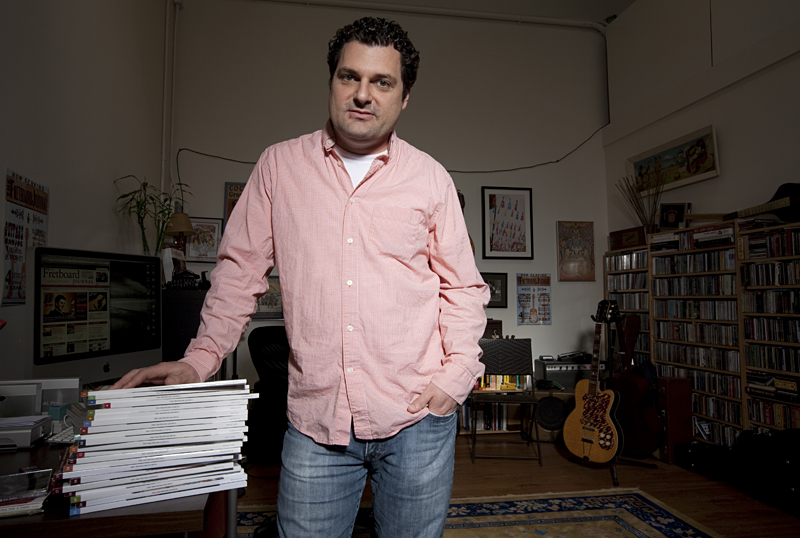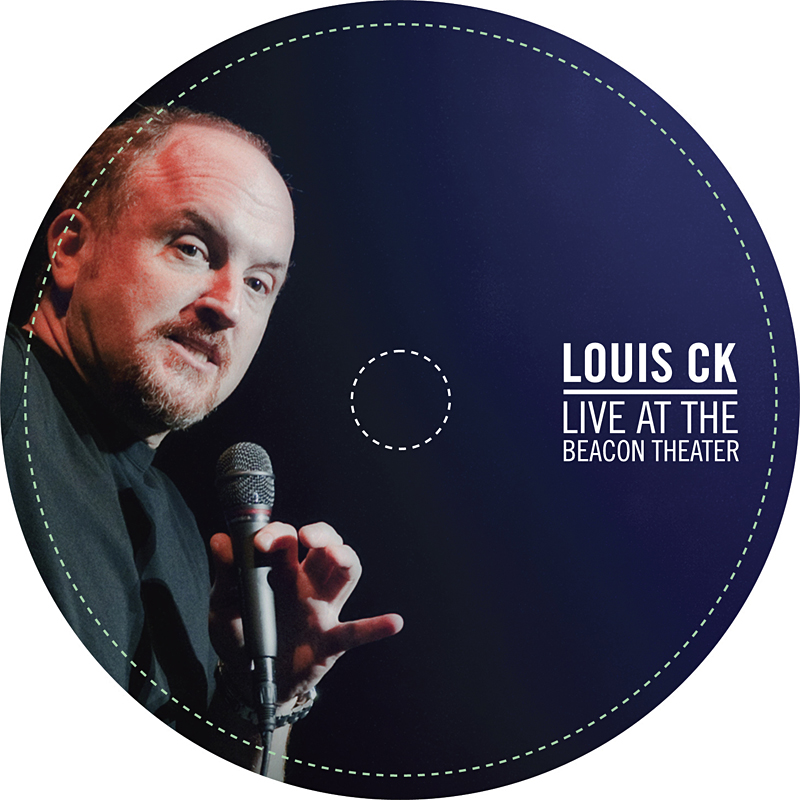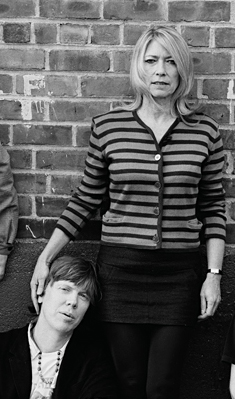When it comes to launching a new business these days, publishing an independent music magazine is about as contra- indicated as becoming a travel agent or owning a video store. From Punk Planet to HARP to Devil in the Woods to Seattle’s own No Depression, the past five years have laid waste to a once-thriving and fun world of print music journalism that now exists online and in a largely truncated form. That said, why would anyone think it’s a good idea to launch a glossy 130-page quarterly magazine devoted to long-form articles written for a super-niche audience of guitar nerds that costs $12.95 an issue?
Jason Verlinde—a former music editor for Amazon—did just that in 2005. Since then he and his San Francisco–based co-publisher have managed not only to keep their magazine, Fretboard Journal, afloat, but also turn it into one of the most respected titles among fans and players of string instruments. And while you might imagine its readership to be mostly middle-aged white guys (which is not untrue), consider this: Among those middle-aged white guys are regular subscribers Elvis Costello and Jackson Browne.
“When we were first starting this, everyone I talked to said sell lots of ads and keep the production costs and cover price low,” says Verlinde, sitting in FJ‘s basement headquarters in downtown Ballard. “I’m glad we didn’t listen to them.”
Defying common sense, Verlinde says FJ survives because of its roughly 20,000 readers. A mere 20 percent of its revenue comes from ads, mostly independent craftsmen of high-end string instruments like Vermont-based Froggy Bottom Guitars and Virginia’s Huss & Dalton.
“Print advertising is a black hole in which one throws wads of cash—except for Fretboard Journal,” says Dan Murdoch, manager of Fremont-based Dusty Strings, one of the few retail stores that advertises in the magazine. The reason? “People keep their [back issues] forever,” says Murdoch.
It stands to reason that it’s a lot harder to throw away a $13 magazine than it is a $5 copy of Guitar World. Verlinde says readers tend to keep each issue, collecting them on their bookshelves and coffee tables. This was all part of his business plan—in an age when information is available everywhere and for free, much of it tends to be useless garbage. People seemed willing to pay for quality and integrity, he says, because there is little of it to be found in the current mass-media market. As examples, he looked to the success of The Believer, The Surfer’s Journal, and Lapham’s Quarterly, each a fancy print publication with a narrow audience and a high newsstand price.
But readers are also paying for content they cannot find anywhere else. Verlinde says there were countless guitarists not being covered in magazines like Guitar World or Acoustic Guitar whom he knew guitar nerds were bigger fans of than, say, Steve Vai or Joe Satriani—great but often uncelebrated players like Tom Waits’ guitarist Marc Ribot, Sir Richard Bishop of the Sun City Girls, and Nigerian guitarist King Sunny Ade.
“FJ definitely fills a void in the magazine world in this area of interest,” says Mark Demaray, an Everett-based lawyer, vintage guitar collector, and longtime FJ subscriber. “They get into the background and history of the people involved, as well as the stories and details of the instruments.”
For example, a 2010 cover story on David Rawlings—a highly respected but understated guitarist mostly known as the musical partner of his wife, Americana icon Gillian Welch—explored exactly what many guitarists have wanted to know: how he came to own that 1935 Epiphone Olympic archtop he’s known for playing. This is a lot more interesting than you’d imagine, evolving from a story of rival pre–World War II guitar manufacturers into one of a neglected instrument passed from yard sale to sooty garage before coming into the hands of a young guitarist in search of his own unique sound.
Additionally, Verlinde prides himself on FJ‘s emphasis on musicians interviewing musicians or penning feature articles, a concept The Believer has employed with writers. Since issue 1, FJ has featured one-on-ones between Neko Case and Charlie Louvin, David Grisman and Chris Thile, and a 20-plus-page cover story on David Lindley written by Ben Harper.
“Having dealt with music journalists my entire adult life and having been one, there is a formula to how it’s done,” says Verlinde. “You know, ‘We’re gonna introduce the band here, then talk about their latest record here, then we’ll get into the minutiae.’ It’s just great to wipe the slate clean and get new perspectives, which musicians can deliver.”
“I’m surprised by what FJ is able to pull off,” says Kyla Fairchild, publisher of the print version of No Depression. “It strikes me as a trust-fund or stock-windfall passion play rather than a self-sustaining business model. Having published a niche magazine myself for over 13 years and being very familiar with the costs associated with printing, shipping, paying contributors and the economics of newsstand sell-through rates, I can’t see how it would be financially viable. Especially since it’s such a gorgeous, high quality, publication that would conceivably come with a particularly high printing and shipping cost. I hope people realize what a gift it is.”
Yet throughout the market crash of 2008, Verlinde says readership remained steady. Stranger yet is that potential advertisers actually began knocking on FJ‘s doors; in the wake of the economic crisis, boutique guitar makers who had previously had wait lists for their product suddenly faced a dearth of cancelled orders. They needed to get their name back out there, and FJ was the place to go for a very simple reason—their readership is more likely to respond to an ad than some kid flipping through Guitar World at 7-Eleven.
“Reaching the right people in the right environment for the right price is key,” says Fairchild, “and that’s what Fretboard Journal delivers.”
“We tend to skew older,” says Verlinde. “Our average reader is in his 40s or 50s and has a good job and a bunch of guitars. Like NPR, we have an audience that’s actually buying stuff. It’s not a bunch of broke college students.”
It might not be the sexiest readership, but it’s working for FJ.
“It’s a weird industry,” says Verlinde. “And it’s certainly a weird time to be in print publishing.”








